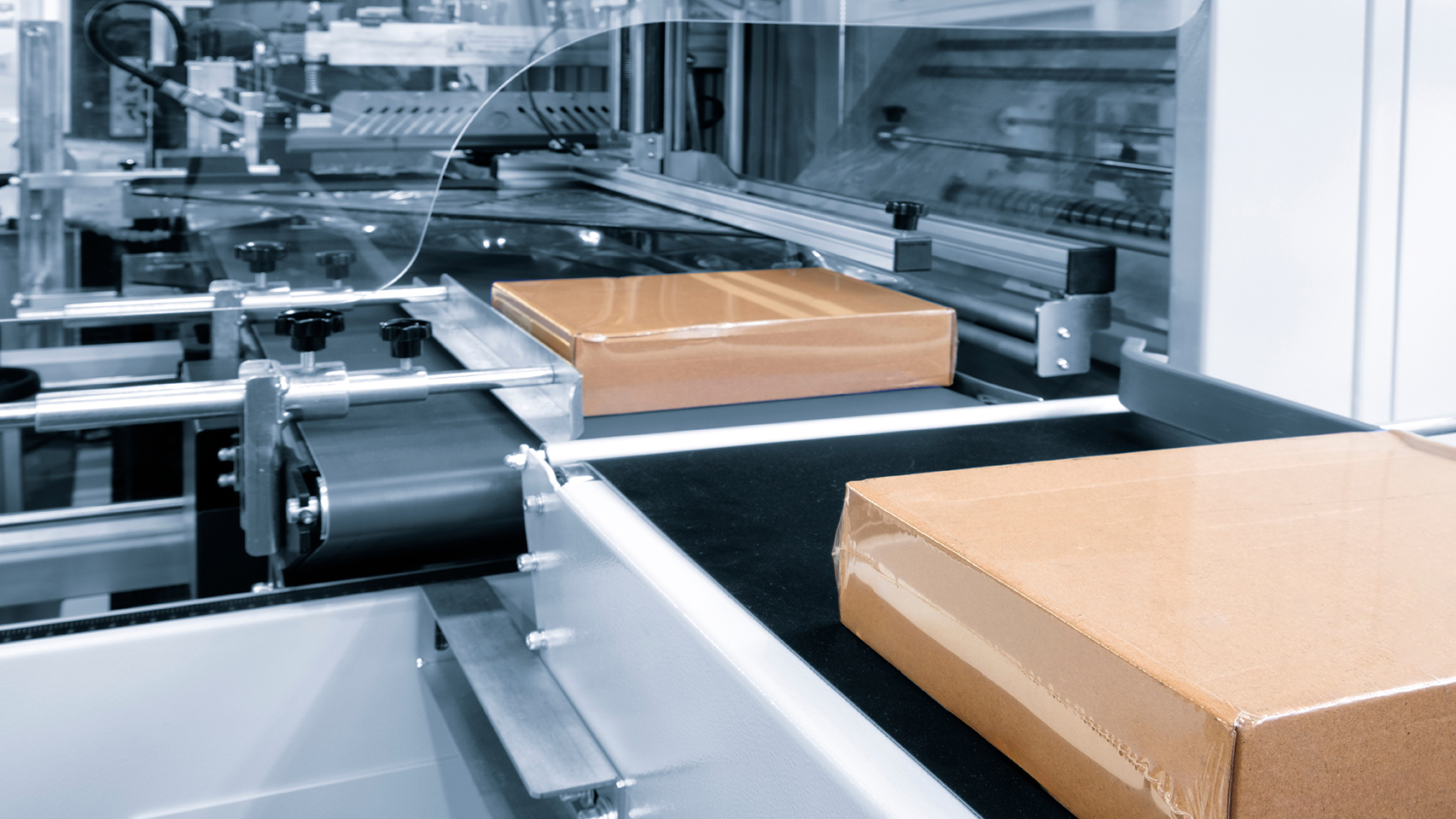Feature
The crucial role of packaging machinery in supply chains
Unseen but impactful, contemporary packaging machinery is quietly transforming how products are wrapped, sealed, and labelled. By Jens Kastner.

Packaging machinery is revolutionising the industry with advancements in automation, sustainability, product safety, and smart technology. Credit: Matveev Aleksandr via Shutterstock
As consumer goods brands are increasingly burdened with a flood of regulations for the reduction of emissions and waste, and consumers are incorporating more sustainability criteria into their consumption decisions, there is a strengthening rationale for including packaging machinery-makers at the start of the product development process.
Matthias Giebel, partner for sustainability & innovation at B+P Consultants, a Germany-based consultancy focusing on the packaging sector, and part of the world-leading German packaging machinery sector, said these considerations are being driven hard by regulation.
Indeed, packaging plays a very prominent role in the current European Commission’s European Green Deal policy - whose legislative and policy reforms have encouraged the circularity of packaging solutions.
The Green Deal, whose overarching aim is making the European Union (EU) climate neutral by 2050, has prompted laws such as the proposed new EU packaging and packaging waste regulation and a green claims directive; approved changes to the EU food contact materials regulation and a single-use plastics directive.
Meanwhile, in the USA, the Biden administration’s keystone Inflation Reduction Act has sought to link sustainability with business models through subsidies and tax breaks.
“Packaging machinery construction plays a particularly important role as an ‘enabler’, as the creation of recyclability and climate-friendliness usually requires that multilayer composites are replaced by mono-composites, which, in turn, translates not only into increased material costs, but also a lot of conversion effort on existing packaging machines in order to achieve efficient high-speed packaging,” said Giebel.
Speaking to Packaging Gateway, he added that effective sustainable packaging development, “from concept to consumer only works with the right mechanical engineer at your side who knows the regulatory requirements and customer needs in order to implement them into sustainable packaging solutions”.
But, he said, brands have been slow to realise that shifting to sustainability without sacrificing quality needs quality advice and expertise, and consultants themselves have not always taken advantage of these opportunities:
“So far, only a few mechanical engineers have recognised how much advice their customers in the branded goods industry need and also what business opportunities arise from competent advice,” said Giebel.
Early positive examples are Germany’s Uhlmann Pac-Systeme and Gerhard Schubert, serving the pharmaceutical and food packaging machinery sectors, who have significantly strengthened their own consulting units, “and we believe that others will follow suit to cope with the new realities,” he added.
Indeed, while there are considerable challenges in switching packaging materials to green-up supply chains, there are success stories, An early example was Switzerland-based food multinational Nestlé when in 2019 launching its YES! snack bars in a new recyclable paper wrapper.
In a breakthrough innovation, a confectionery bar was packaged in paper using a high-speed flow wrap technology.
Germany’s Mechanical Engineering Industry Association (VDMA - Verband Deutscher Maschinen und Anlagenbau) confirmed that intensive cooperation between packaging machinery-manufacturers, packagers, customers and research institutions is becoming increasingly important, as new machine solutions and technical adjustments enable sustainable packaging concepts in the first place:
“Packaging machinery manufacturers support their customers in implementing their sustainability strategies through innovative packaging concepts in the spirit of ‘design for recycling’,” said Judith Binzer, VDMA packaging machinery expert.
Speaking to Packaging Gateway, she added: “An important focus is on reducing the materials used: more machines are being developed that can process thinner films. Mono-materials are easier to recycle, but cannot cover all the requirements placed on packaging, especially when specific properties such as special barrier functions are required.”
Binzer added that packaging materials made from renewable raw materials, such as fibre-based packaging (paper and cardboard), are increasingly being used if the products to be packaged allow this in terms of product safety and durability.
According to Binzer, interesting approaches to watch are the use of grass paper and seaweed-based materials for certain types of packaging.
Binzer referred to Germany-based manufacturer of measurement and process engineering solutions Brabender, which at the Interpack (the international trade fair for the packaging industry and the related process industry) in Düsseldorf last May (2023) showed how seaweed can be processed into a biodegradable packaging film - an alternative to fossil-fuel-based plastics.
Also, TU Dresden (the Dresden University of Technology) has developed a process shaping the algae film into a 3D shape using a press that is driven pneumatically and electromechanically.
As with some other industry associations across Europe, the VDMA has complained that the proposed EU packaging and packaging waste regulation, as drafted (it is still being debated by EU ministers and the European Parliament) contains a host of unclear requirements.
These have the potential to cause uncertainty for packing machinery manufacturers and customers alike.
That does not help when Europe’s economy (and especially Germany, which is poised to enter a technical recession in Q2 2024), is weak. The VDMA noted that orders received by German packaging machinery-makers in the first nine months of 2023 dropped by 12%, compared to January-September 2022.
Nevertheless, the US-based Association for Packaging and Processing Technologies (PMMI) (formerly the Packaging Machinery Manufacturers Institute, hence PMMI) is more hopeful that a shift towards sustainability will boost the industry, with brands seeking out new solutions to meet consumer demand and regulation.
Its PMMI Business Intelligence’s 2023 World Packaging Machinery report singled out shifting end user and legislation demands has aiding a projected 2023-7 compound annual growth rate (CAGR) for the global packaging machinery market of 5%.
It predicted the market size would grow from USD45.9 billion to USD56 billion, with year-on-year growth of close to 13% in 2022. While this expansion will not be spread evenly worldwide, it does indicate supply chain shifts are creating opportunities for the sector.